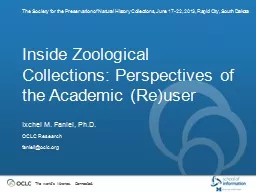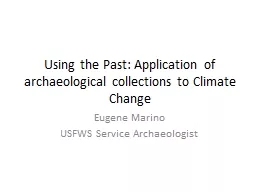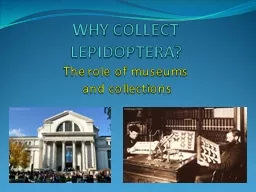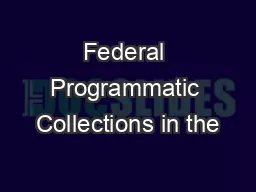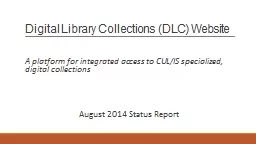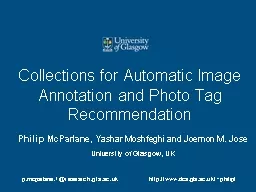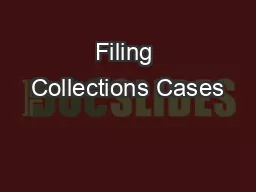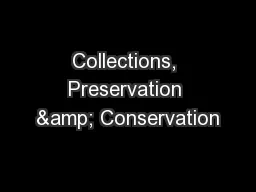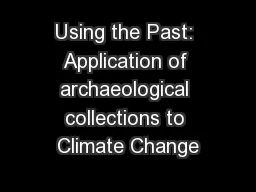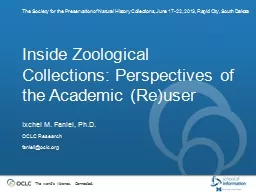PPT-Inside Zoological Collections: Perspectives of the Academic
Author : natalia-silvester | Published Date : 2016-08-14
The Society for the Preservation of Natural History Collections June 17 22 2013 Rapid City South Dakota Ixchel M Faniel PhD OCLC Research fanielioclcorg Institute
Presentation Embed Code
Download Presentation
Download Presentation The PPT/PDF document "Inside Zoological Collections: Perspecti..." is the property of its rightful owner. Permission is granted to download and print the materials on this website for personal, non-commercial use only, and to display it on your personal computer provided you do not modify the materials and that you retain all copyright notices contained in the materials. By downloading content from our website, you accept the terms of this agreement.
Inside Zoological Collections: Perspectives of the Academic: Transcript
Download Rules Of Document
"Inside Zoological Collections: Perspectives of the Academic"The content belongs to its owner. You may download and print it for personal use, without modification, and keep all copyright notices. By downloading, you agree to these terms.
Related Documents

